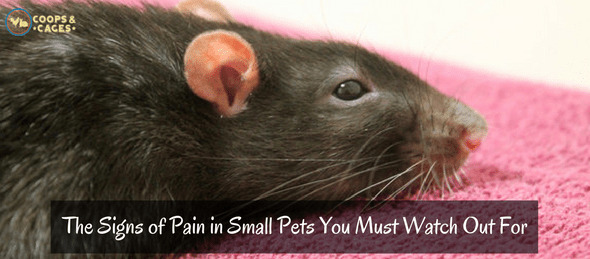Ferrets, Guinea Pigs, Interesting, Rabbits, Rats
The Signs of Pain in Small Pets You Must Watch Out For
One question every pet owner has is, “Is my pet feeling any pain?”. Though it is difficult to answer, sometimes our pets show signs that they are in pain. If only our pets can talk, then they can tell us what is wrong, but as the pet owner we are responsible for their health and detecting these signs of pain is one of the biggest responsibilities.
Each animal shows different signs that they are in pain. Most of the time, we have to rely on our own instincts to detect if our tiny little pets are in pain and need immediate attention by the veterinarian.
Signs of Pain in Rodents
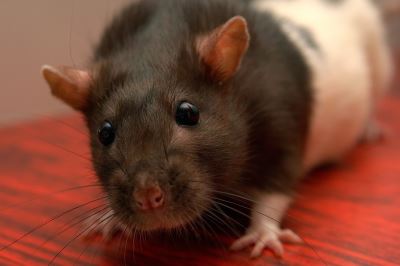
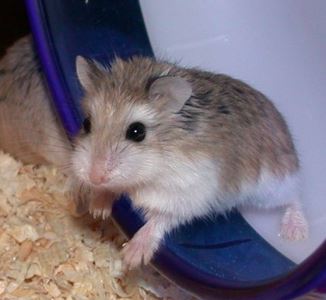
Guinea pigs, hamsters, rats, mice, gerbils, chinchillas, among others, belong to the rodents list that can be raised as pets. These rodents will show similar signs if they feel they are in pain.
Change in Appearance
Rodents in pain will have a slight change in appearance with the lack of grooming and even with a hunched posture. At some time, their hair will stand up due to lack of grooming.
Decreased Activity
Rodents that feel pain will also have a decreased activity within their rat enclosure or cage like walking, standing up, sniffing and even interacting with you or other rodents within the cage. Sometimes rodents that feel pain will lick, scratch, bite, excessively groom or even self-mutilate the area affected by the pain. While others will have a loss of appetite, and also drink less water resulting in weight loss.
Red Tears
Rats, on the other hand, will have “red tears”. Red tears are red substances that are not tears, but are called porphyrin. It causes stains in the fur around the rat’s nose and eyes. If your pet rat has this, it could be a sign that he is in pain. So, keep an eye for this if you have a pet rat.
Changes in the Face
While mice, in contrast, usually will have changes in their face. Sometimes their cheeks will bulge and even their nose. Handling rats and mice that are in pain may show aggressiveness towards you and they will squeak if you touch the area which is painful to them.
Becoming Less Vocal
Guinea pigs that are in pain will be less vocal as it normally does. Guinea pigs, rabbits and chinchillas might develop a serious problem within their gastrointestinal tract if they are in pain with no appetite. That serious problem is called gastrointestinal stasis syndrome, which can be fatal to them if not treated immediately.
Signs of Pain in Ferrets

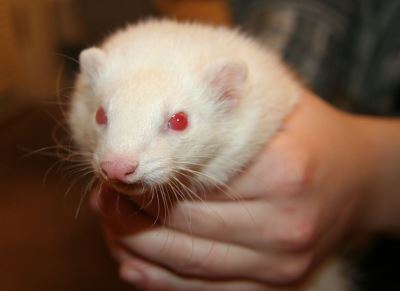
They may appear to be in perfect condition, but their body might be telling you otherwise. Here are some signs that your pet ferrets are in pain.
Vocalizing in High Pitch
Vocalizing in a high-pitched scream is what a ferret usually do if the feel in pain. Sometimes, they just scream if you left them or even if you handle them and you touch a painful area to them.
Decreased Activity Than the Usual
Another sign to look out for is the ferret’s decreased activity. If the ferret also loses its appetite, then it might be in pain as well.
Other Signs
Other signs includes a change of posture while it is sleeping, lack of grooming, and excessive biting when being handled. If the ferret feels abdominal pain, then it will grind its teeth most of the time and even pawing its mouth.
Signs of Pain in Rabbits
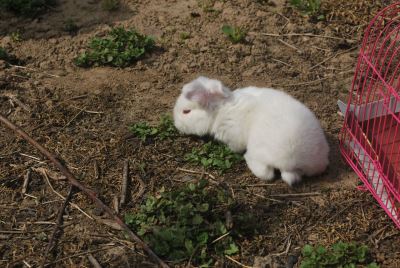
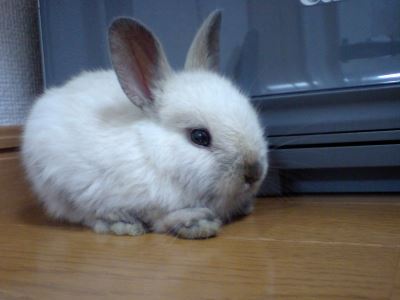
Rabbits also show a lot of signs to signal us that they are in pain.
High-Pitched Screams
Just like a ferret, they also vocalize a high-pitched squeal or scream, especially when they are hurt. They also squeal if ever you touch the area that feels painful to them.
Less Activity
Most of the time, rabbits that are in pain will stay in a corner and be completely immobile and inactive. They will just hide in their cage or in their shelter with loss of appetite, resulting in weight loss.
No More Grooming Sessions
And just like rodents too, rabbits usually stop grooming themselves when they feel pain.
Pain Treatment
If you suspect or you feel that your little pet is in pain, the next best step to do is treating your pet to help ease the pain. Treating their pain is a complicated process depending on their species and the medications for the pet and also depending on what is causing their pain.
Non-Steroidal Anti-Inflammatory Drug (NSAID)
Most veterinarians will recommend a drug that blocks pain for the animal, which is called non-steroidal anti-inflammatory drug (NSAID). Using ibuprofen and acetaminophen can be very fatal to some species of animal so it is better to consult your local veterinarian before giving away any medications.
Plenty of Rest
After giving your pet the proper pain treatment, the best thing to do is to let them have plenty of rest. It is also a good thing to keep your pet nearby you so you can keep an eye on their condition if ever they revert back to feeling in pain again.
It is always a good thing to keep in mind the preventing the pain from happening is the best cure. By keeping your pets safe within a clean and healthy environment will ensure that your beloved pets will live their life away from pain.
Image Sources: [1] [2] [3] [4] [5] [6] [7]



